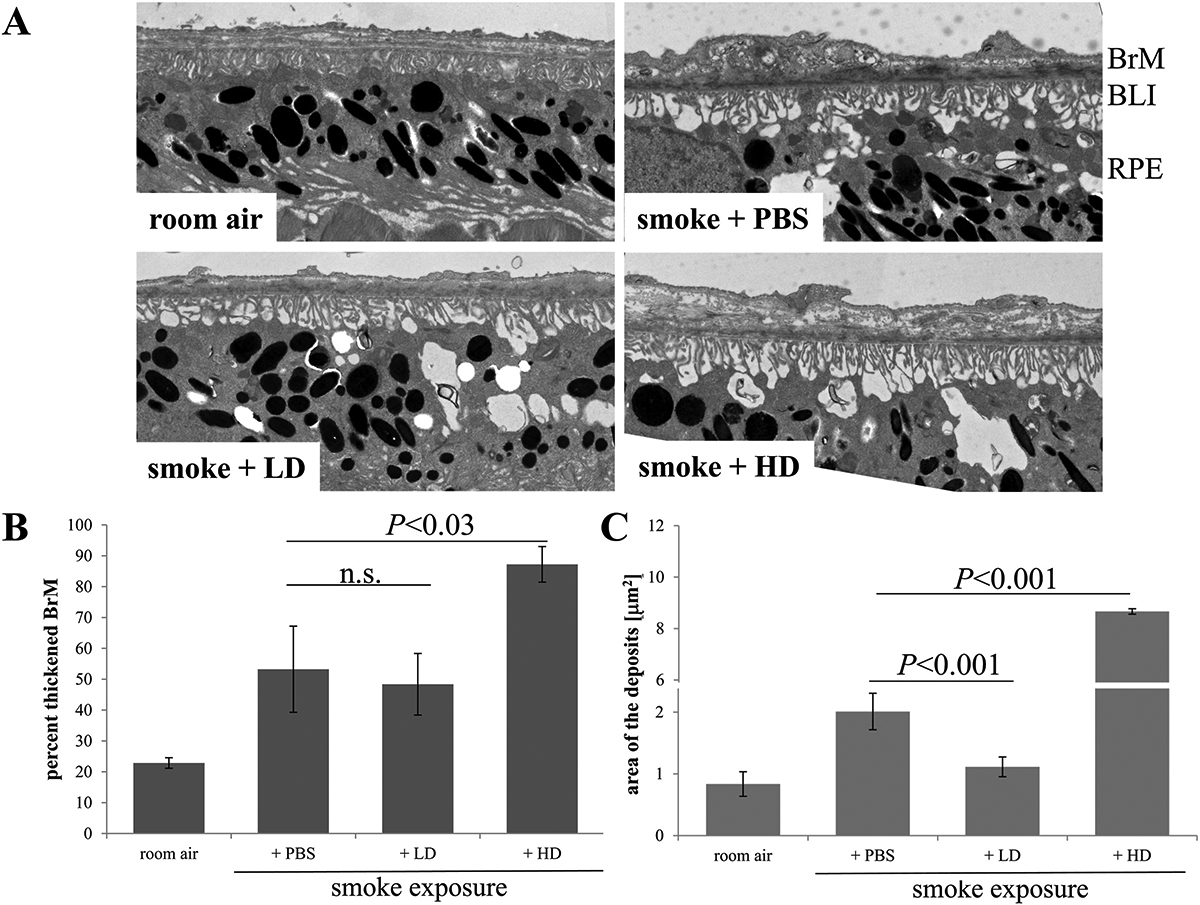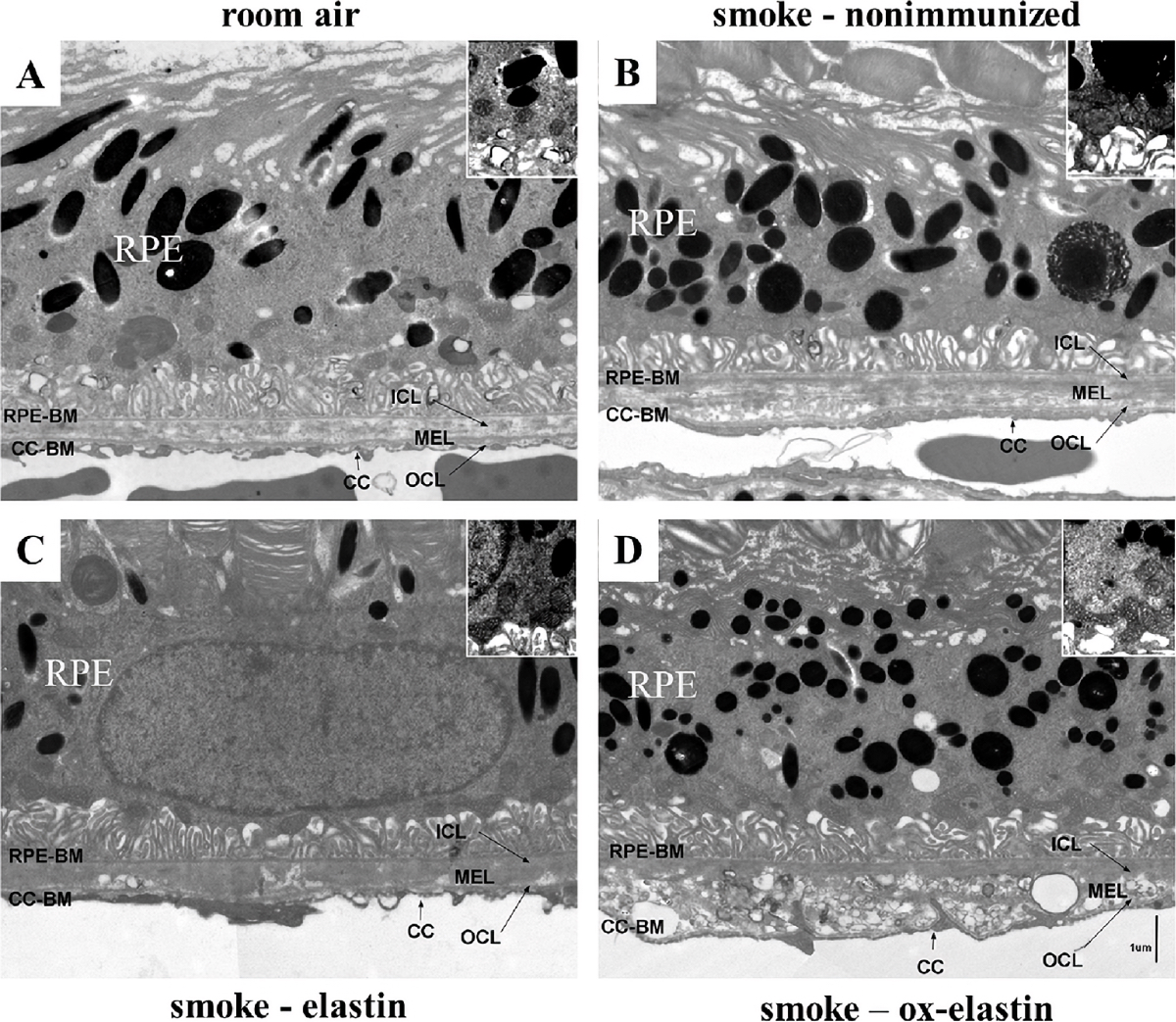We have a new collaborative manuscript out in iOVS, Peptide-Based Immunotherapy Against Oxidized Elastin Ameliorates Pathology In Mouse Model Of Smoke-Induced Ocular Injury. (pdf here)
Authors: Bärbel Rohrer, Nathaniel Parsons , Balasubramaniam Annamalai , Crystal Nicholson , Elisabeth Obert , Bryan Jones @BWJones, and Andrew D Dick.
Abstract:
Purpose: Age-related macular degeneration (AMD), the leading cause of blindness in western populations, is associated with an overactive complement system, and an increase in circulating antibodies against certain epitopes, including elastin. As loss of the elastin layer of Bruch’s membrane (BrM) has been reported in aging and AMD, we previously showed that immunization with elastin peptide oxidatively modified by cigarette smoke (ox-elastin), exacerbated ocular pathology in the smoke-induced ocular pathology (SIOP) model. Here we asked whether ox-elastin peptide-based immunotherapy (PIT) ameliorates damage.
Methods: C57BL/6J mice were injected with ox-elastin peptide at two doses via weekly subcutaneous administration, while exposed to cigarette smoke for 6 months. FcγR-/- and uninjected C57BL/6J mice served as controls. Retinal morphology was assessed by by electron microscopy, and complement activation, antibody deposition and mechanisms of immunological tolerance were assessed by Western blotting and ELISA.
Results: Elimination of Fcγ receptors, preventing antigen/antibody-dependent cytotoxicity, protected against SIOP. Mice receiving PIT with low dose ox-elastin (LD-PIT) exhibited reduced humoral immunity, reduced complement activation and IgG/IgM deposition in the RPE/choroid, and largely a preserved BrM. While there is no direct evidence of ox-elastin pathogenicity, LD-PIT reduced IFNγ and increased IL-4 within RPE/choroid. High dose PIT was not protective.
Conclusions: These data further support ox-elastin role in ocular damage in in part via elastin-specific antibodies, and support the corollary that PIT with ox-elastin attenuates ocular pathology. Overall, damage is associated with complement activation, antibody-dependent cell-mediated cytotoxicity, and altered cytokine signature.
Keywords: Age-related macular degeneration; Complement; Elastin; Peptide-based immunotherapy; Smoking.

